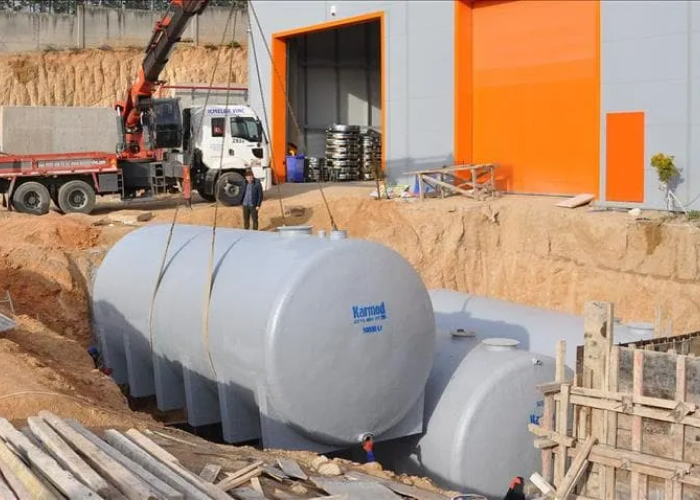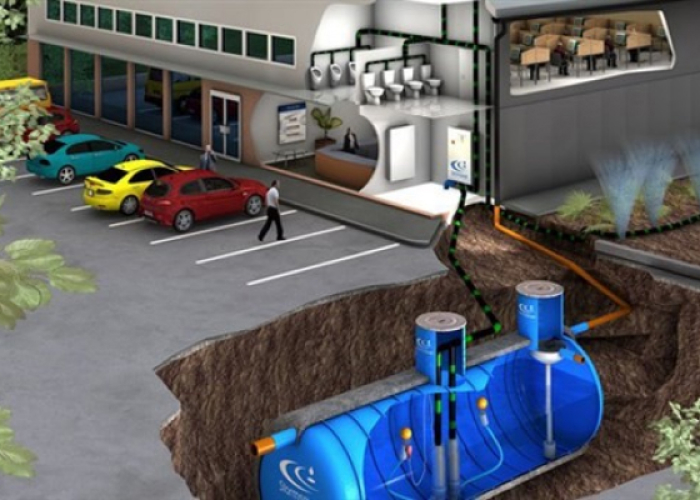Rainwater harvesting continues to gain importance both in our country and in many parts of the world. This is why rainwater tank models, which are part of water tank storage systems, are becoming increasingly popular as they allow the collection and utilization of rainwater, which is essential for our future.
Rainwater collection systems can be easily installed in various settings, from simple setups in homes to larger-scale stations. Stationary systems are designed to collect rainwater for multiple households. In home-based rainwater collection systems, the collected water is typically used for purposes such as plant irrigation, cleaning, and even drinking. However, consuming rainwater directly from the storage tanks may not be advisable as it can pose health risks. Therefore, it is important to implement filtration processes. The filtration can be done in two stages. Below are the steps to filter your rainwater collection system:

1.Filtering Foreign Particles with Coarse Filters
It is essential to use coarse filters in all rainwater storage systems. Since the collection area is often the roof of houses, it is susceptible to the presence of various foreign particles. Coarse filters prevent large foreign particles from entering the storage tanks. These filters are typically installed at the entry point of the tank. In case a dedicated filter is not available, tools such as wire mesh can be used as an alternative. By employing such filters, potential contaminants that could harm the tank's integrity are prevented from entering. This ensures the suitability of the filtered water for cleaning and irrigation purposes.
2.Filtering Microorganisms with Fine Filters
In addition to non-consumable purposes, rainwater collected in the system can also be used for drinking. In this case, connecting a water purification system to the plumbing is sufficient. However, it is important to note that water purification devices generate waste water during the filtration process. Although this system ensures the safety of the water for consumption, the waste produced may be seen as inefficient at times. It is recommended to replace the filter of the purification device every six months. The taste of rainwater can vary depending on the region it comes from, and air pollution can also impact its quality.
Features of Rainwater Tanks
Rainwater tanks are commonly made from polyethylene material. This choice of material allows for affordable pricing and lightweight tanks. Polyethylene tanks are produced in a single piece without joints or rivets, utilizing molds designed specifically for tank manufacturing. This production method is referred to as monoblock production. The term "mono" refers to "single" or "one," while "block" denotes a section or piece.

When purchasing tanks, individuals often have questions regarding warranty coverage and post-purchase support. All storage products come with a two-year warranty against manufacturing defects, and repair services are available for damage caused by usage at the manufacturing facilities.
Polyethylene is a food-grade material, meeting international standards for contact with consumables. Consequently, rainwater tanks used in collection systems are manufactured using this material.
In contrast, tanks made from other materials such as polyester and stainless steel require on-site assembly. Polyester tanks offer superior chemical resistance, while stainless steel tanks are suitable for storing various types of food and chemical substances. Stainless steel tanks excel in terms of operating temperature, with a maximum working temperature of eighty degrees, close to the boiling point of water.
In this article, we have shared information about the significance of rainwater systems and the operational and manufacturing principles of rainwater tanks. If you are considering installing a rainwater collection system in your home, our customer representatives are available to assist you with selecting the appropriate tanks for your needs.


 EN
EN
 DE
DE
 FR
FR
 IT
IT
 ES
ES
 PT
PT
 RU
RU
 AR
AR
 BG
BG
 SR
SR
 GR
GR
 SQ
SQ
 RO
RO
 PL
PL
 HU
HU
 CZ
CZ
 HR
HR
 AZ
AZ
 GE
GE
 AM
AM
 IL
IL